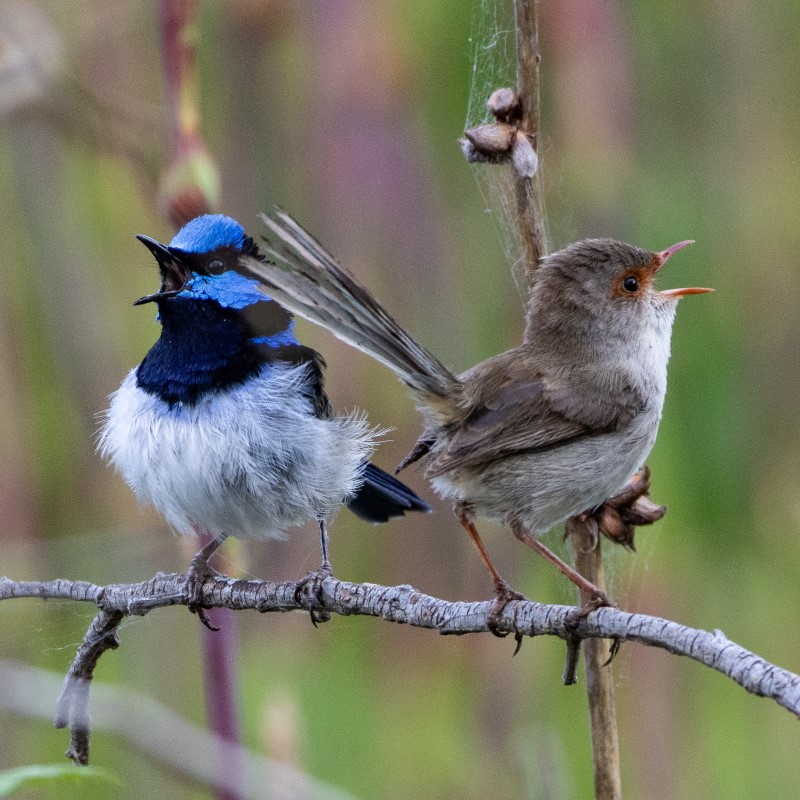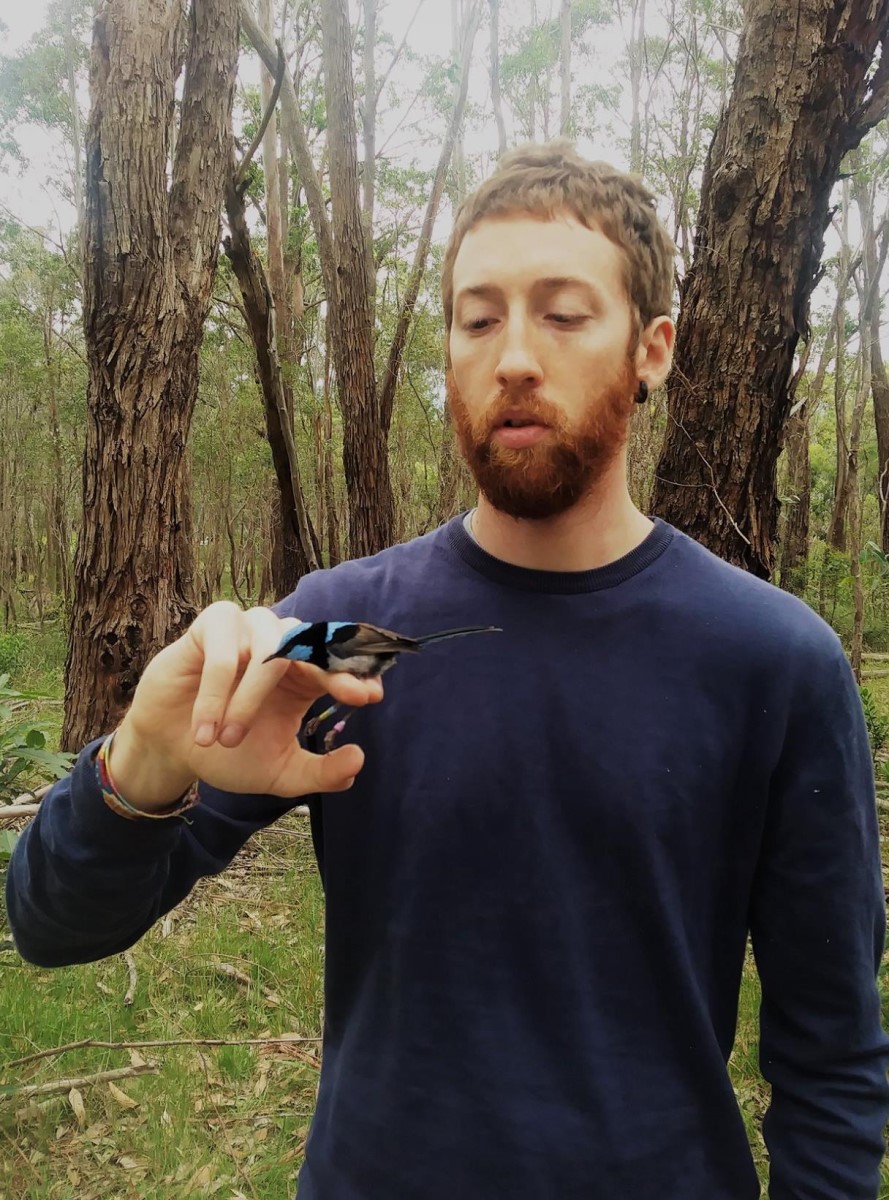A new Proceedings B paper explores the seasonal variation in cooperative behaviour displayed by superb fairy-wrens. Lead author, Ettore Camerlenghi, tells us more.

Why do some group-living animals live in a state of conflict with neighbouring groups while other species form peaceful multilevel societies, where groups can interact, tolerate each other, or even cooperate? A little Australian songbird, the superb fairy-wren, might provide clues to better understand what conditions promote intergroup harmony.
During spring and summer, fairy-wrens live in stable groups, using song to aggressively defend territories on which they raise their young. However, during the harsh winter season, when mortality peaks, neighbouring groups can merge to form temporarily stable communities. This multilevel society has parallels with human behaviour, for example in hunter-gatherer societies, where families merge to form higher groups, such as clans and bands.
When in immediate danger, fairy-wrens emit distress calls, seeking help from others. Helping may involve approaching the predator and giving alarm calls, or performing distraction displays to draw the attention of the predator away from the individual in danger.
We tested whether the likelihood of helping an individual in distress, and the type of help, was influenced by group membership and environmental conditions. To do so, we simulated a threat using a taxidermic predator (a kookaburra, a large type of kingfisher) while playing back distress calls, and then measuring the responses of listeners. Distress calls were played from individual fairy-wrens within the same breeding group and from the same community, and during both the breeding (spring) and non-breeding seasons (winter). We then recorded the birds’ responses, which could include helping or, as a measure of aggressive territorial behaviour, singing.
We found a dramatic increase in cooperation in the harsh winter season, which paralleled the changing structure of fairy-wren society. During the winter months, birds never responded aggressively and usually helped, especially if the individual in distress was from their breeding group. However, during the breeding season, they often responded aggressively and rarely helped.
Our findings suggest that the interaction between social structure and environmental conditions drives a seasonal switch in cooperation, supporting the hypothesis that multilevel societies can emerge to increase cooperation during harsh environmental conditions.
About the authors

Ettore Camerlenghi (pictured here with a superb fairy-wren) is a postdoc at Bielefeld University in Germany. He received his PhD at Monash University in Australia, where under the supervision of Prof. Anne Peters, he described and investigated the multilevel society of the superb fairy-wrens. He aims to understand what are the drivers and the consequences for birds living in such complex societies.
Robert Magrath is a Professor Emeritus at the Australian National University. He gained his PhD at the University of Cambridge and studies avian behavioural ecology, with an emphasis on acoustic communication and interspecific eavesdropping.
Damien Farine is an Associate Professor at the Australian National University and an Eccellenza Professor at the University of Zurich. He was awarded a PhD in Zoology from the University of Oxford and studies the social and collective behaviours of animals.
Sergio Nolazco is an ecologist whose focus of research is on conservation biology and behavioural ecology. During his PhD at Monash University, he collaborated with Ettore Camerlenghi to study the multilevel society of superb fairy-wrens.
Anne Peters is a Professor at Monash University studying ecology, behaviour and conservation of birds, predominantly fairy-wrens. Since she started her PhD at the Australian National University she fell in love with these charming birds and their fascinating antics. Over the years, her research group has answered questions about their arresting ornamentation, their complex social interactions, their health and diseases, and lately the impacts of global change.
Proceedings B is looking to publish more high-quality research articles and reviews in behavioural ecology. If you have an idea for a review, we strongly encourage you to submit a proposal. Find out more about the submission process.
Image credits: Top image, male and female superb fairy-wrens, by Kaspar Delhey; Ettore Camerlenghi with a superb fairy-wren, by Sergio Nolazco.




